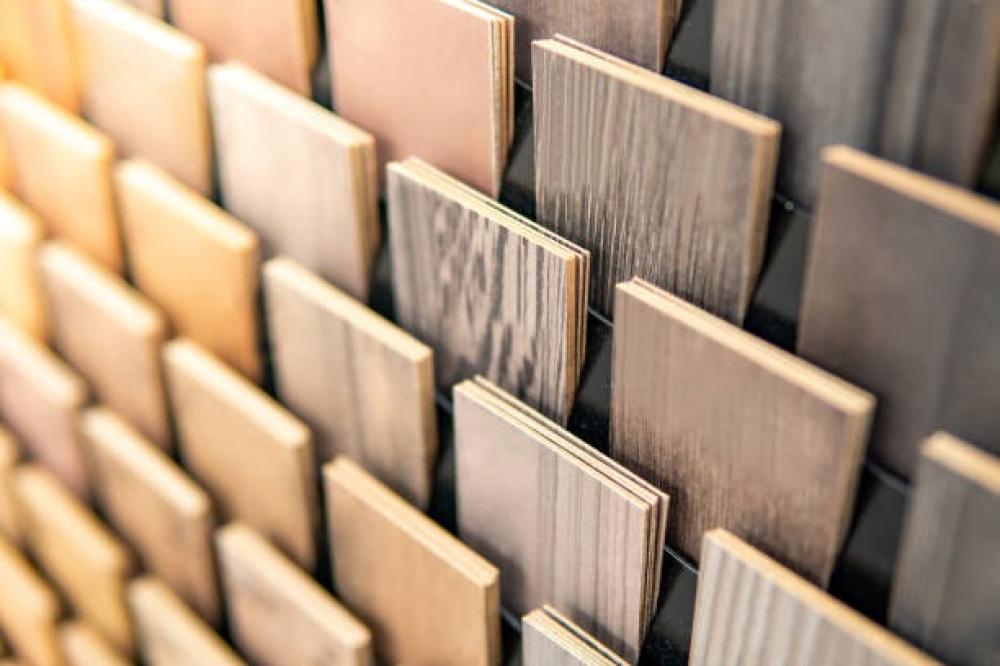Hardwood floors are a traditional and popular choice for home decoration, but they can be expensive and require special care.
Fortunately, there are many alternatives to wood available today that combine beauty and durability at more competitive prices.
In this article from Al-Ghamlas , we will learn about the most popular types of wood alternatives for flooring, their advantages and disadvantages, to help you choose the most suitable one for your home.
What is a wood alternative for flooring?
Wood alternative flooring is any type of material used to cover floors, which mimics the appearance and some of the properties of natural wood.
These alternatives differ in the materials used in their manufacture, the method of installation, and the price.
The most popular types of wood alternatives for flooring are:
- PVC (Polyvinyl Chloride): A type of plastic that is flexible and resistant to water and scratches. It comes in designs that realistically mimic wood and is easy to clean and maintain.
- WPC (Wood Plastic Composite): A mixture of wood fiber and plastic, combining the appearance of natural wood with the durability of plastic. Moisture and insect resistant, widely used in outdoor areas.
- Laminate: It consists of multiple layers, the top layer of which is printed with wood engraving. It is characterized by its durability and ease of installation, but it is less durable than natural wood.
- Ceramic and porcelain: They are manufactured in the form of panels that mimic the appearance of wood, and are characterised by their hardness and resistance to water and scratches.
- Linoleum: A natural material made from vegetable oils and lime, it is environmentally friendly and renewable.
So there are many alternatives that will give you the same elegant look of parquet or wood, with a number of other advantages, and without worrying about the other disadvantages of parquet.
Advantages of wood alternative for flooring
The previous alternatives we mentioned come together in that they provide a number of advantages that make you seriously consider them to replace wood in floors. These advantages include:
- Durability: Most wood alternatives are highly durable and resistant to scratches and stains.
- Easy maintenance: It does not require special care and is easy to clean.
- Moisture Resistance: Many types are water and moisture resistant, making them ideal for use in kitchens and bathrooms.
- Variety: Available in a variety of designs and colors to suit all tastes.
- Price: In general, wood substitute prices are lower than natural wood prices.
Disadvantages of wood alternative flooring
Everything has its advantages and disadvantages, and it is only fair to inform you of the disadvantages that you should know before making your decision:
- Appearance: Does not give the same warm, natural feel that natural wood does.
- Durability: Some species may be less durable than hardwood.
- Environmental impact: Some species may contain chemicals that are harmful to the environment.
Comparison between wood and parquet alternatives:
Both wood and parquet alternatives have different advantages and disadvantages. Parquet, as a type of natural wood, provides a warm and authentic look, but it can be more expensive and requires regular maintenance.
Wood alternatives such as laminate, vinyl, and ceramic are durable, easy to maintain, and come in a variety of designs that mimic natural wood. However, none of these alternatives may give the same natural warmth as parquet.
In general, choosing the right type depends on budget, location, expected use of the flooring, and personal style.
Simplified comparison:
Tips for Choosing the Right Wood Alternative
- Budget: Determine how much you want to spend on flooring.
- Where to use: If you will be using the floor in a place that is exposed to moisture, choose a type that is waterproof.
- Expected Use: If you are looking for a floor that is durable and can withstand heavy use, choose a durable type such as WPC or ceramic.
- Appearance: Choose the design and color that matches your home decor.
- Ease of installation and maintenance: If you want to install the flooring yourself, choose a type that is easy to install and maintain.
Additional tips:
- Consultation: Before making a final decision, consult a flooring professional for personalized advice.
- Samples: Order samples of different types to compare in your home.
- Installation: Make sure the installation process is done correctly for best results.
Wood Alternative Cladding Panels: An Aesthetic Addition to Outdoor Spaces
Wood alternative cladding panels are an excellent choice for covering the exterior walls of homes and balconies. They are attractive in appearance and weather resistant, and are easy to install and maintain.
WPC wood alternative prices
WPC board prices vary depending on thickness, density, and design. Generally, they are higher than laminate, but lower than natural wood.
Wood alternatives for flooring are an excellent choice for those looking for beautiful and durable flooring at affordable prices. With a wide variety of types and designs, you can easily find the perfect option for your home. Before making a final decision, we recommend that you compare the pros and cons of each type, and consult a specialist for appropriate advice.

